Sandstones are sedimentary rocks. They are considered to be the most useful rocks for decoding Earth history. These rocks are also used as building materials, and as metallic minerals sources.
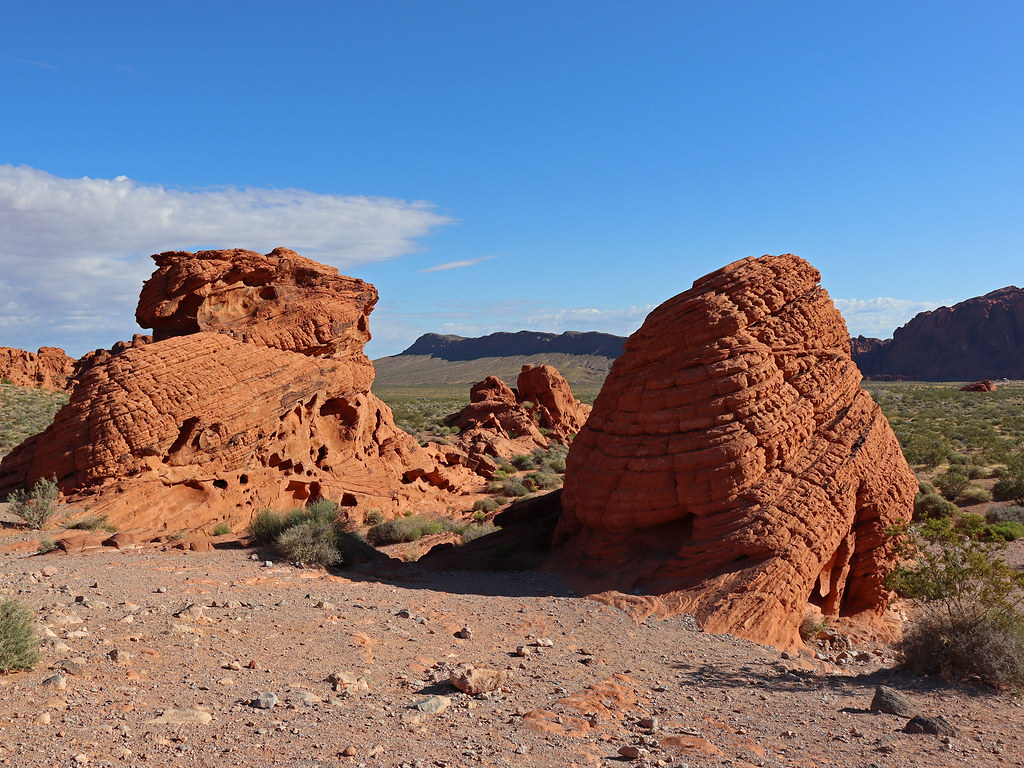
Image source: https://search.creativecommons.org/photos/09b78f08-5860-4eff-aca8-e4de0b02a0ae by westernlandscapes
What is sandstone?
Sandstone is a sedimentary rock composed mainly of sand minerals or rock grains. The sand grains in sandstone are generally particles of mineral, rock, or organic material that have been reduced to “sand-size” by weathering and transported to their depositional site by the action of moving water, wind, or ice.

Image source: https://search.creativecommons.org/photos/eb5eaaed-55d0-4b9f-92cb-b91166678084 by westernlandscapes
Most sandstone is composed of quartz and/or feldspar because these are the most common minerals in the Earth’s crust. Like sand, sandstone has many colors, but the most common ones are tan, brown, yellow, red, grey, and white.
Although some sandstones are resistant to weathering, they are easy to work with. Therefore, they are used in building and paving materials. Hornblende and biotite are the most chemically and physically susceptible to destruction; they would be eliminated in the early stage of transport, unlike Orthoclase and quartz that would persist longer because they are more chemically harder, and not prone to cleavage. Quartz is the most abundant type of sand grain present in sandstone.
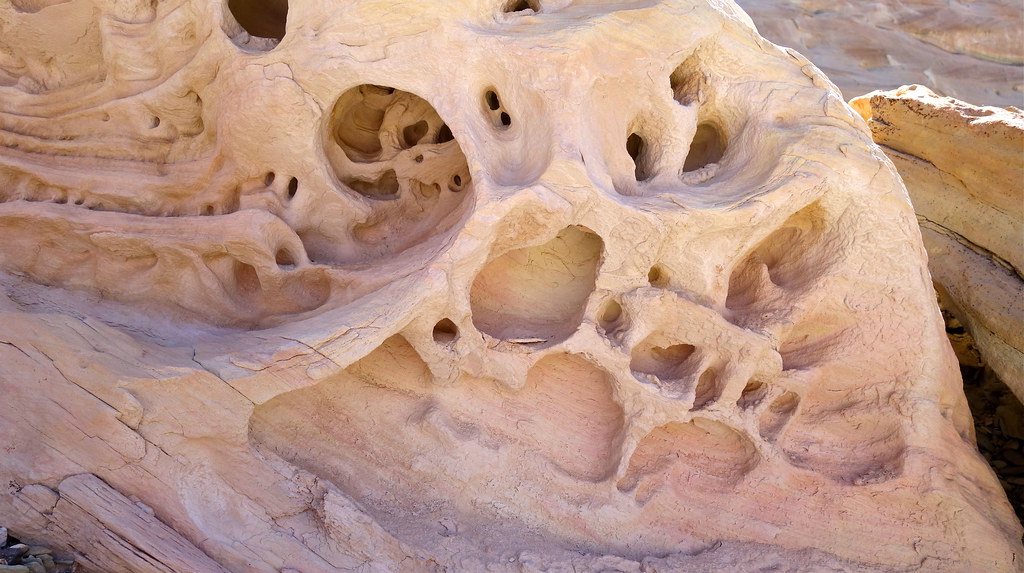
Image source: https://search.creativecommons.org/photos/cf347522-8720-46ac-9119-82694d2a48c9 by jurvetson
How is Sandstone Formed?
Sandstones are clastic formed from cemented grains that may be fragments of a pre-existing mineral. The cement holding these grains together are typical: calcite, clays, and silica. Grain sizes are in the range of 0.1 to 2 millimeters.
The formation of sandstone presents two principal phases. First, a layer of sand accumulates as the result of sedimentation from water or air. Once it has accumulated, the sand becomes sandstone when compacted by pressure of overlying deposits and cemented by the precipitation of minerals within the pore spaces between sand grains. The most common cementing materials are silica and calcium carbonate.
Principal environments of deposition may be split between terrestrial and marine, as illustrated in these groupings.
- Terrestrial environments:
- Rivers (levees, point bars, channel sands)
- Alluvial fans
- Glacial outwash
- Lakes
- Deserts (dunes and ergs)
- Marine environments:
-
- River deltas
- Beach and shoreface sands
- Tidal deltas and flats
- Offshore bars and sand waves
- Storm deposits (tempestites)
- Turbidites (submarine channels and fans)

Image source: https://search.creativecommons.org/photos/f0794f39-9bd5-473c-b82f-c721a6677811 by Dimitry B
Types and Compositions of Sandstone
Sandstone is composed of sand-sized mineral grains, rock fragments, or pieces of fossils that are held together by a mineral cement. The definition of sandstone is based on the size of the grains: It grades into siltstone, shale, or mudstone (grains less than 0.0625 mm in diameter) and conglomerate ( if the grain size exceeds 2 mm1).
Sandstone also includes biogenic grains (shells, coralline algae, etc). When a rock contains more than 50% of sand-sized carbonate grains is named calcarenite.
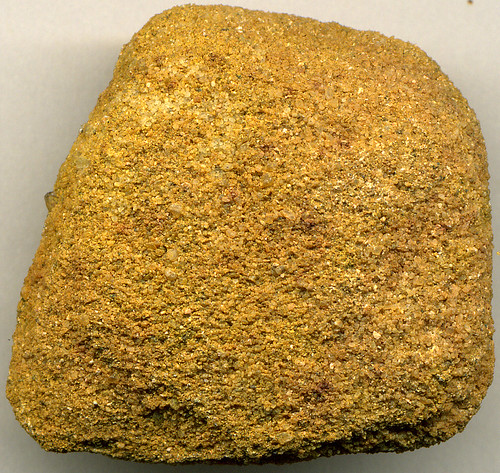
Image source: https://search.creativecommons.org/photos/d7add99c-59a2-46cf-9610-f5add024aec6 by James St. John
Sandstones are divided into three main groups:
- Arkosic sandstones have a high (greater than 25 percent) feldspar content and a composition similar to granite.
- Quartzose sandstones (beach sand) have a high quartz content (greater than 90 percent).
- Argillaceous sandstones contain a significant level of clay or silt.
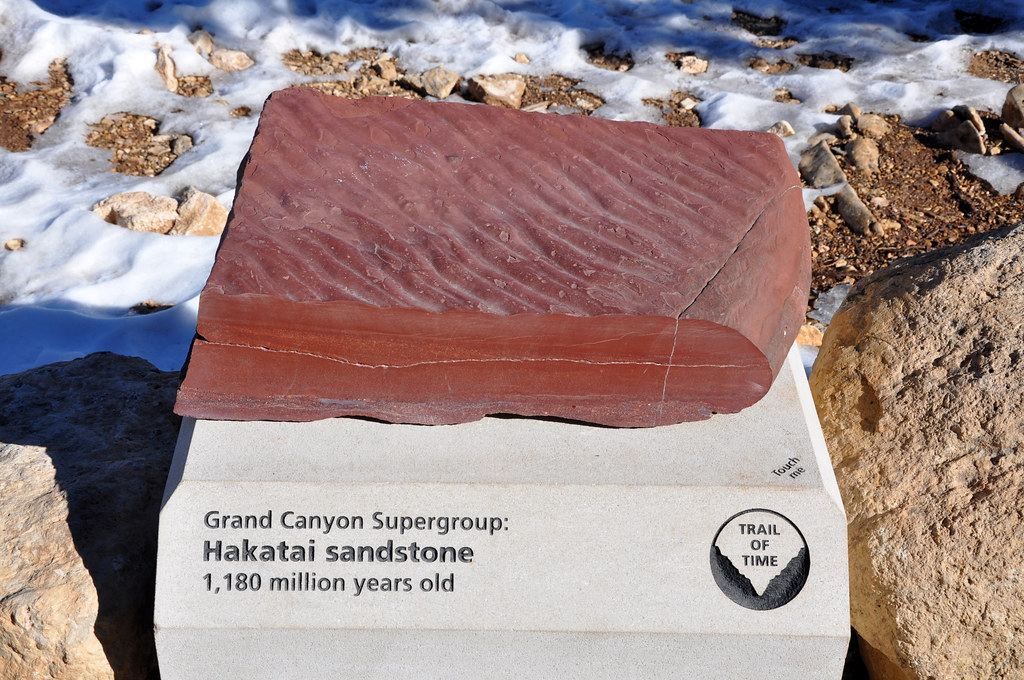
Image source: https://search.creativecommons.org/photos/cc71ac64-8ffc-4255-afc6-b21f2568387b by Grand Canyon NPS

Image source: https://search.creativecommons.org/photos/473424a4-b49d-414d-a9b1-783b80be0386 by Grand Canyon NPS
Sandstones are also compositionally variable rocks that give rise to a lot of more types:
| Sandstone or related rock type | Description |
| Arenite | A general term for all sandstones. |
| Arkose | A feldspar-rich (>25%) variety. |
| Calcarenite | A limestone variety composed of sand-sized non-terrestrial carbonate grains. |
| Calclithite | A variety of terrigenous sandstone consisting of carbonate grains (>50%) from disintegrated limestones. |
| Flagstone | A sandstone that is readily split into thin flags suitable for paving. |
| Graywacke | Graywacke is usually dark-colored, coarse-grained, lithic, well-indurated, and immature sandstone. |
| Greensand | A sandstone which contains lots of green clay mineral glauconite. |
| Grit | A coarse-grained variety with angular grains. |
| Orthoquartzite | A relatively pure light-colored quartz-sandstone. The term has been applied to well-indurated (quartzitic) rocks in the past, but today is referred to all pure sandstones regardless of how friable they are. |
| Psammite | A synonym of sandstone and arenite. |
| Quartz arenite | An almost pure sandstone. Quartz content is above 90-95%. |
| Quartzite | A metamorphosed sandstone. The term has been applied to hard sedimentary sandstones. |
Where can we find sandstone today?
Sandstone has many uses. Strongly cemented ones are used as a building material all over the world.
Sandstone is often adopted in construction. The old town of Alghero (the walls and all the fortifications), in the northwest of Sardinia, was built mainly of yellow sandstone coming from the coast.
Another Famous example: the Romans employed sandstone to build the Porta Nigra (Gaul, Germany today) in the last quarter of the second century A.D.
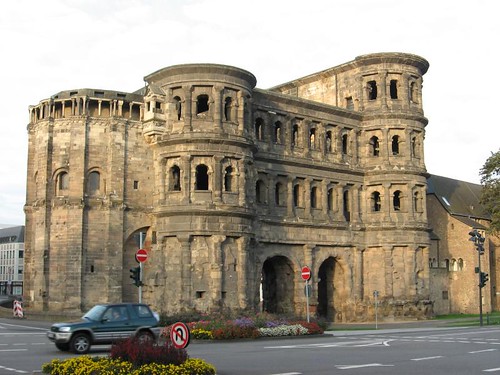
Image source: https://search.creativecommons.org/photos/28020461-bc29-4cf2-be56-55a271a8afef by tpkeefe
Crushed sandstone is a common material in road construction; sand is a principal component of concrete.
Pure quartz sand is used to make glass, carborundum, and semiconductors.
Special types of crushed sandstones are employed in agriculture as soil conditioners or fertilizer.
The chemical industry also applies sandstone because it is very resistant to most acids.
Finally, this rock is also important for geologists because it contains lots of information to reconstruct the geologic Earth history.

Image source: https://search.creativecommons.org/photos/a360da5a-931c-4b6a-a39d-0d28a4078e15 by Sidneiensis
Info sources:
http://www.sandatlas.org/sandstone/
